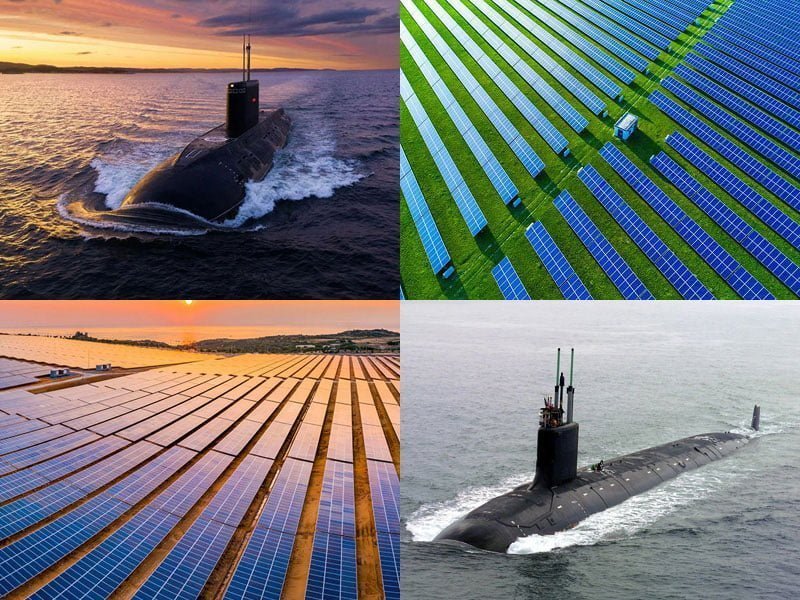We are three years into what federal Treasurer Jim Chalmers calls The Defining Decade. By his own count, he has given thirteen speeches on it since he first espoused the label in a National Press Club address in February.
Earlier this month, the Treasurer net zeroed in on it in his keynote at Melbourne’s Economic and Social Outlook Conference, the first conference, he noted, that had adopted The Defining Decade as its theme.
“I’m grateful for that because I really believe that net zero transformation will be the defining piece of the defining decade,” he said.
Chalmers’ belief in the transformational power of Net Zero to fuel Australia’s 21st Century reindustrialisation and Green Energy Superpower ambition – and in providing free money to bolster it – is unwavering.
Any doubt was dissed last month, when Energy minister Chris Bowen announced plans for the federal government to underwrite 323GW (up from 6GW) in renewables generation to help meet the government’s target of 82 per cent renewable energy by 2030. The cost of the massively expanded National Capacity Scheme is not revealed.

All this modernisation ambition and government largesse should and does focus the minds of Australia’s homegrown tech sector participants looking for opportunity for growth and scale.
That opportunity spans myriad clean energy and defence projects and contracts coming down the line this decade and beyond.
But first they must navigate a maze of many moving but disconnected parts, programs and agencies. Right now, what they would be most grateful for is some policy coherence. In this, the last sitting fortnight of federal parliament for 2023, they will have to wait until next year.
David Waterhouse, the chief executive officer of Hypersonix Launch Systems reflects the views of many leaders of domestic advanced manufacturing and software and hardware SME’s when he notes the disconnect between defence and industry departments.
Hypersonix is an aerospace engineering company. It’s core scramjet engine technology sits firmly in the strategic dual-use technology category, for both defence and industrial applications.
Earlier this year, the company beat out more than 60 global competitors to win a major US government contract.
Waterhouse wrote in InnovationAus’s recent Capability Papers: “What innovators need is for the Department of Defence and Department of Industry and Science to work together with a single coordinated strategy from Government, aligning defence demand with industrial growth and a clear carve-out of those technologies that will be sourced from overseas through our allied partnerships such as AUKUS.”
The Lowy Institute likened the policy incoherence to navigating Sydney’s new 24-kilometre labyrinth of intersecting underground road junction tunnels at Rozelle in the inner west.
“Don’t stop. Don’t reverse. Keep going and use the next exit,” was the response by a transport official to questions about what drivers should do if they got lost in the maze.
Lowy added: “It is the advice that the Albanese government also seems to be applying as it confronts its own intersecting maze of domestic policy challenges with foreign reputational consequences from China relations to climate change.”
To even try to understand the scope, and complexity of the intersecting, though disjointed policy priorities and the quest for coherence coming from business and industry, let’s step back a bit.
A Tale of Two Missions: NetZero Meets RealpolitTech
Federal Labor came to government in a post-Covid moment, with a commitment to act on climate change and to rebuild the nation through that action.
It has centred its reindustrialisation policy rhetoric on achieving Net Zero, because, the Treasurer says, “it brings together the cost of living and productivity challenges in our economy.”
Critics in Australia and globally argue Net Zero does do that, but not in a good way.
And the list of things shaping this ‘Defining Decade’ is long. If there is a common theme among them it is ‘security’, or more accurately the lack of it.
People are insecure about a lot: energy reliability and cost in the transition to net zero; the availability and cost of housing and cost of living generally; job security in a world of AI and smart machines; social cohesion amid extreme culture wars; and national security & defence at a time of regional hot wars in the Ukraine and Gaza, increasing ‘great power’ friction between the US and China, and between Australia and China in the Indo Pacific.
“Right Now, Australia is facing the most challenging and complex set of strategic circumstances we’ve seen since the Second World War,” declared Defence minister Richard Marles in February, about the same time his treasurer penned a long essay in The Monthly, “Capitalism after the Crises.”
This is why we have the AUKUS alliance, the Defence Strategic Review (DSR) and anticipation of a new, though delayed, defence industry development strategy – as well as the Net Zero-driven reindustrialisation-thru-renewables push.
It’s why we have new financing and innovation focused vehicles like the $15 billion National Reconstruction Fund (NRF); the defence sector’s $3.2 billion Advanced Strategic Capabilities Accelerator (ASCA); the $392 million Industry Growth Fund; and literally hundreds of additional state and federal R&D and commercialisation grant programs.
All these pieces of government support – in one or another – are attempts to shape a 21st century industry policy and fund a globally relevant domestic defence/cleantech ecosystem.
They are also a response to the US Biden Administration’s US$1.2 trillion Inflation Reduction Act (IRA) and the US$280 billion CHIPS Act.
The former is subsidising thousands of green energy projects, and the latter is focused on defence and in rejuvenating the US semiconductor industry.
Policy wonks, economists and politicians have varying labels for this emergent 21st century hybrid policy framework in the age of economic, energy and geopolitical insecurity.
Foreign Affairs Magazine calls the US version, the National Security Economy; Australia’s Defence leaders call it “Disruption and Deterrence”.
I think of it as Net Zero meets RealPolitech for what ties them both is strategic technological capability: the identification of what’s unique to Australia for the nation and for global export markets; and the funding, development, and commercialisation of it. This is especially true of ‘Dual Use’ technologies.
The Tech that Binds
Having married industrial policy to climate change, and national security policy to the AUKUS alliance, the government’s biggest challenge is to show how both policies can live and work together so innovative companies large and small can identify and prioritise the right pathways for success.
“These are great initiatives on paper, but the demand signals are not clear, not definitive and there is a distinct lack of coordination between the two funding initiatives. This makes it difficult for innovators to have certainty on the pathway to commercialisation,” says Hypersonix’ David Waterhouse.
“The NRF and ASCA are governed by separate areas of government with competing priorities, leading to innovators having to broker a co-ordinated outcome themselves.”
For Australia, the policy rhetoric says it is imperative to develop a national model of innovation that generates widespread productivity gains, resulting in a resilient industrial base.
However, there is still much uncertainty on how it will be delivered and how the industrial base will be supported.
A recent United States Studies Centre report, Upscale says “Although the end goal has been articulated, the path to leveraging the private sector for national security is not straightforward.”
“The Defence Strategic Review (DSR) placed particular emphasis on the need for clear demand signalling by Defence to industry and the research community, including the university sector, and highlighted the critical role of international partnerships in accelerating the development of more technologically advanced capabilities.
“Producing sovereign defence capability for Australia in a self-sustaining system at speed requires targeted policies geared to multiple dimensions.
“It involves policies directed towards Australian defence and dual-use start-ups and small and medium enterprise (SME); foreign-owned Defence Primes; Australian industry groups and networks; the university and academic sector; the AUKUS partnership; private capital across the spectrum; different government agencies; and Commonwealth Ministers.”
Waterhouse adds: “The federal government has not given its sovereign industry the commitment and confidence it needs to help Australia face the rising competition and proliferation of dual-use capabilities in a deteriorating security environment”.
As InnovationAus has reported, there is also industry confusion with the proposed – and critical – Defence Trade Controls Export Bill 2023. Its intent is to create an export license-free Defence Industrial base between Australia, the US and the UK to boost collaboration and technology transfer under AUKUS.
But the Bill criminalises working with or exporting to foreign persons any defence or dual-use technologies listed in the Defence and Strategic Goods List without a license or permission. The list includes quantum tech, space tech and various electronic components.
The Treasurer meanwhile acknowledges Australia’s industry policy framework needs to be recast and modernised so we can “maximise our advantages and leverage our strengths” … for Net Zero.
When Chalmers delivered his speech to the Economic Outlook Conference, he acknowledged the many ministers that have primary carriage of leading critical policy areas; Chris Bowen in climate and energy; Ed Husic in industry; Madeleine King in resources; Tanya Plibersek in environmental approvals.
Defence didn’t rate a mention. Oh well, onward and upward for 2024.
Do you know more? Contact James Riley via Email.

